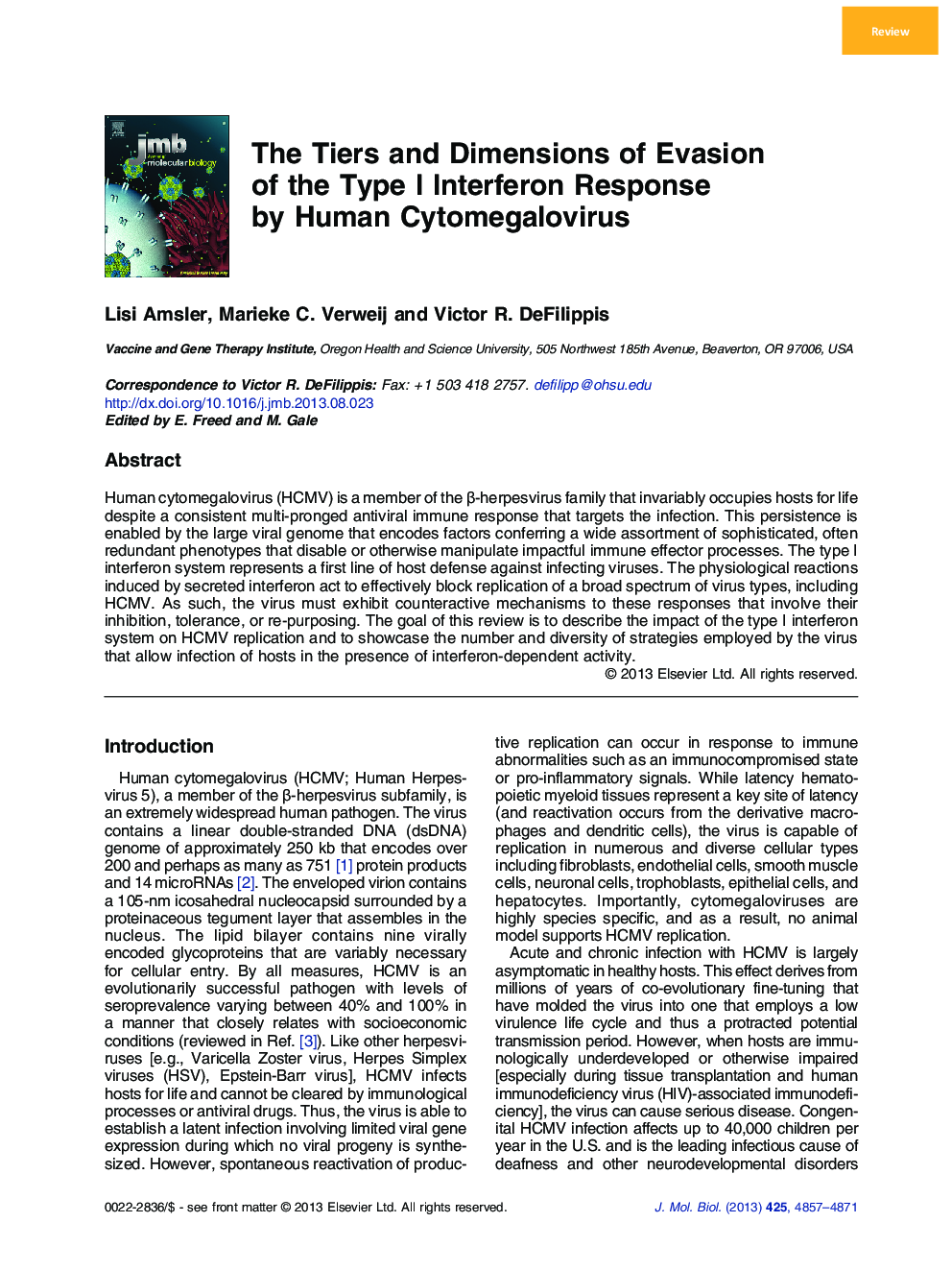| Article ID | Journal | Published Year | Pages | File Type |
|---|---|---|---|---|
| 2184511 | Journal of Molecular Biology | 2013 | 15 Pages |
•Human cytomegalovirus is an extremely immunogenic pathogen that infects hosts for life.•Lifelong infection requires numerous sophisticated mechanisms of immune evasion.•The type I interferon system represents the first line of defense against a broad array of virus types including cytomegalovirus.•Human cytomegalovirus has evolved multiple phenotypes to counteract, withstand, or co-opt physiological responses induced by type I interferons.
Human cytomegalovirus (HCMV) is a member of the β-herpesvirus family that invariably occupies hosts for life despite a consistent multi-pronged antiviral immune response that targets the infection. This persistence is enabled by the large viral genome that encodes factors conferring a wide assortment of sophisticated, often redundant phenotypes that disable or otherwise manipulate impactful immune effector processes. The type I interferon system represents a first line of host defense against infecting viruses. The physiological reactions induced by secreted interferon act to effectively block replication of a broad spectrum of virus types, including HCMV. As such, the virus must exhibit counteractive mechanisms to these responses that involve their inhibition, tolerance, or re-purposing. The goal of this review is to describe the impact of the type I interferon system on HCMV replication and to showcase the number and diversity of strategies employed by the virus that allow infection of hosts in the presence of interferon-dependent activity.
Graphical AbstractFigure optionsDownload full-size imageDownload high-quality image (203 K)Download as PowerPoint slide
